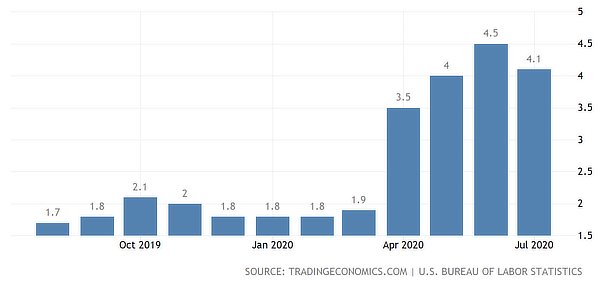
2021-5-23 18:00 |
The delicious food creation is comparable to the digital network created by Bitcoin in all its glorious aspects.
Made popular by the book, “Outliers: The Story of Success,” the mainstream principle states that, in order to become an expert in any field, you need 10,000 hours of devotional practice in that field.
With every hour being worth every effort and not wasted.
Those 10,000 expended hours are pivotal for one to become an expert in whatever they are striving for, making those 10,000 hours quintessential to the recipe for success.
Of course, 10,000 hours can be denominated in many ways. Those 10,000 hours could be broken down to mean 417 days' worth of hours, or three hours a day for 3,333 days, which is slightly over nine years. In 2010, 33.333 hours translates to 2,000 minutes, or the time it would take to mine 200 consecutive blocks on the Bitcoin network producing 10,000 bitcoins from block rewards.
The number 10,000 has become the universal bellwether for how we measure the amount needed of X to achieve Y. The significance of 10,000 is apparent and, while those 10,000 bitcoins used to purchase pizza may, at first glance, just seem arbitrary; it was those 10,000 bitcoins that became an allegory for its own aspirations, an argument for innovation, change and a new frontier in monetary financial decentralization. It was those 10,000 bitcoins that pushed forward a monumental moment for bitcoin, marking the first real-life use case for the nascent digital currency.
You see, there’s more to that legendary union between the world’s first cryptocurrency and everyone’s favorite food. There’s more to it than just Laszlo Hanyecz innocently using bitcoin to purchase those two large Papa John’s pizzas. There’s more to it than just Laszlo marking the first real-life bitcoin transaction. There’s more to it than just people using the “pizza infinitely cut” analogy to defend bitcoin’s supply cap.
Pizza was the perfect choice to spend those bitcoins.
It’s the flattened, leavened, wheat base of a pizza that is emblematic of bitcoin’s flattened hierarchy system.
It’s the wood-fired baking process that hardens the outer crust rim, aptly synonymous with the cryptographic burning of energy to fortify a block in the hash-based, proof-of-work process.
It’s the endless variation of sauces and toppings on top of a pizza that can be characterized as the endless layers that the Bitcoin ecosystem is rapidly building on top of the Bitcoin base network. From the tomato sauce to the mozzarella cheese and endless toppings like anchovies, mushrooms, onions, olives, pepperoni; the corollary would be Lightning, Liquid, OmniBolt, WBTC, Umbrel, Sphinx, so on and so forth.
A small pizza is called a pizzetta. A person who makes pizza is known as a pizzaiolo. A small bitcoin, or the smallest bitcoin denomination, is called a satoshi. A person who “makes” bitcoins is known as a miner.
A pizzaiolo readies the pizza dough to be truthfully kneaded leaving it undisturbed and allowed time to proof. But the proof here is not in the pudding, nor the sauce, but rather in the cryptographic hashing in Bitcoin’s proof of work, the honest kneading of a block that transpires the one and only truth.
What started among the Ancient Greeks, and then made popular in Naples, Italy, is now a popular meal option worldwide, unbiased to race, religion, ethnicity and gender.
The word “pizza” in the Lombardic word context is “bizzo” or “pizzo” meaning "mouthful," related to the English words "bit" and "bite".1 Bitcoin’s “bit” and “byte” is the quintessential, underlying raw information needed to transfer value from a set of 256 bits to another set of 256 bits, or 32 bytes.
In 2021, 10,000 bitcoins would have needed to be generated from 1,600 consecutive blocks, in 16,000 minutes, costing millions of dollars in resources, energy, labor, research and don’t forget the delicate precise manufacturing of ASIC chips — a culmination of more than 10,000 hours of mastery.
Each hour garners work. Each bitcoin garners much more than the proof of work.
It has been 11 years since that day when those 10,000 bitcoins — worth about $41 at the time — were used to buy pizza; but during those 11 years, Bitcoin has survived four bull/bear markets, three halvings, multiple hard forks, and constant maligned attacks by ignorant critics whose only job is to sensationalize the uninformed.
Those 10,000 hours is in no way equivalent to 10,000 bitcoins. The endless effort expended in those tireless 10,000 hours does epitomize the effort behind 10,000 bitcoins; a process that shall not be naively viewed in vain.
Bitcoin is now the most popular native digital asset and is also unbiased to jurisdiction, political faction, economic status, age and so on.
Pizza is made for the masses. Bitcoin is made for all economic classes.
It’s the melting and browning of the savory cheese that holds the whole pizza together in an asynchronous way, where each strand of cheese represents a node in the network, holding and relaying to every other strand the necessary bond of validation and truth.
Sure, Laszlo could’ve chosen to order a sandwich, McDonald’s, or even Halal food, but the mere coincidence that pizza was chosen can exemplify the accidental fate and similarities between the two. And regardless, ordering another food option wouldn’t have rolled off the tongue as nicely as...
Happy Bitcoin Pizza Day.
This is a guest post by Eric Choy. Opinions expressed are entirely their own and do not necessarily reflect those of BTC, Inc. or Bitcoin Magazine.
origin »FoodCoin (FOOD) на Currencies.ru
|
|




































